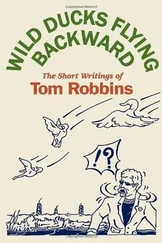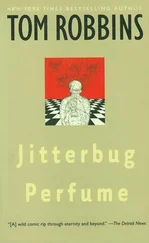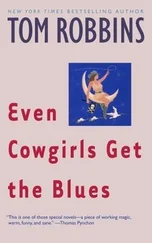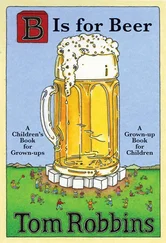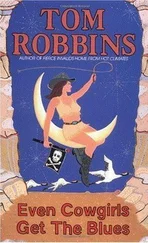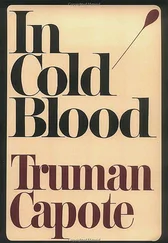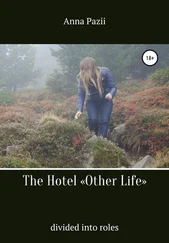Linguistically versatile if far from fluent, I can goof up any number of languages and with varying results. The first time I dined alone in Paris, for instance, I made a mistake that conceivably could have gone in my favor.
Perusing the menu at Polidor, my favorite affordable restaurant in that city of magnificent and expensive places to eat, I thought that the veal in a cream sauce sounded good. However, when the drastically cute waitress came to take my order, I mistakenly asked not for veau en crème but vous en crème, and it took me a moment before I understood that I’d told her that I wanted her in cream.
Of course, that was what I really wanted. Like no habla Chiclets, it was a truthful statement, and Freud, bless his heart, would have immediately recognized it as such. The waitress, being French, simply took it in stride. With neither a giggle nor a blush, she wrote down my order and brought me the veal. It was delicious, but having now comprehended my error and fantasized about the potential result, I couldn’t help but feel a wee bit cheated.
Linguistic malfunctions involving chewable and edible substances are not limited to peasants such as I. Consider John F. Kennedy on a historic day in Germany in 1963.
Among the confections favored by sweet-toothed Deutschen is a jelly-filled pastry they call the Berliner. Now, in the German language, articles of speech (such as “a,” “an,” “the,” etc.) are never placed in front of nationalities or other nouns that identify persons according to their place of origin, although articles, quite naturally, are placed in front of pastries. Thus, there are waggish grammarians who insist that when President Kennedy — shod in hand-tooled leather shoes, a fine Harvard cravat about his neck — buttoned himself into a heavy black cashmere-and-wool topcoat, stepped from a bulletproof limousine onto a privileged podium, and with dignity, passion, and compassion announced his solidarity with a beleaguered city by intoning, “Ich bin ein Berliner,” what he actually said was, “I am a jelly doughnut.”
There are others — mostly earnest liberals — who argue that this interpretation is merely an attempt to besmirch the reputation of a great statesman. I contend it’s nothing of the sort. From my perspective, in fact, the opposite is true. I’ve had occasion now to lug my taste buds all over the planet, exposing them to dishes ranging from the sublime — foie gras mousse in a brown morel sauce (Paris), and warm zabaglione with fresh wild strawberries (Rome), to the challenging — snow-frog fat in custard (Hong Kong), and red ant larva (northern Thailand). In all my gastronomic globe-trotting, however, I cannot honestly say that any food item, with the possible exception of a perfect tomato sandwich, has had a greater impact on my palate and my eye or generated richer, more varied imagerial associations than the jelly doughnut, that plump pastry Pantheon, that unbroken circle, that holy tondo, that doughy dome of heaven, that female breast swollen with sweetness, that globe of glorious goo, that secret round nest of the scarlet-throated calorie warbler, that sun whose rays so ignite the proletariat palate, that hub of the wheel of sustenance, that vampire cookie gorged with gore, that clown in an army overcoat, that fat fried egg with a crimson yoke, that breakfast moon, that bulging pocket, that strawberry alarm clock, that unicorn turd, that jewel pried from the head of a greasy idol (a ruby as big as the Ritz), that Homeric oculus (blind yet all-seeing), that orb, that pod, that crown, that womb, that knob, that bulb, that bowl, that grail, that… well, you get the picture.
Whether consciously or subliminally, JFK could not have identified himself with a more wide-ranging, democratically inclusive sustenance than a jelly doughnut. How might it have affected his legacy, not to mention world peace, had he proclaimed “Ich bin ein Kraut” (I am a cabbage) or “Ich bin ein Kartoffelpuffer” (I am a potato pancake) instead?
As I may have made clear in these confessions (luckily for the reader, and me, as well, Chiclets isn’t a written language), I’ve never been accused of gastronomic timidity. In recent years, I have become increasingly disinclined to partake of morsels intimately connected to deceased members of the animal kingdom, but I can recall only once in my travels when I shied away from an opportunity to sample exotic fare in an exotic setting. That occurred when I was invited to sup with my subjects (that’s right, subjects ) on the day I reigned (I’m not joking) as King of the Cannibals.
I was in northwestern Sumatra with a small group — eight paying river rafters, four guides from Sobek/Mountain Travel (the California-based adventure company), and an English-speaking Indonesian forest ranger who spent his downtime reading Louis L’Amour cowboy novels — intent on becoming the second party to ever run the Alas, a remote river that cuts through the largest expanse of tropical rain forest left in Asia; a dense jungle, home to orangutans, rhinos, and tigers, and perpetually threatened by Japanese timber companies.
Adventure travel is by definition unpredictable, and in the steamy dawn, as we set out from Berstagi aboard a snub-nosed buslike vehicle of unknown manufacture, hoping to put our inflatable boats in the water before the sun became more ornery than any L’Amour gunslinger, we found ourselves on a fortuitous anthropological detour. At a pee stop in the leafy hills not far from where the pavement runs out, we met a surprisingly sensitive field geologist from Mobil Oil, who informed us with genuine excitement that a rare daylong exhumation ceremony was about to transpire in an isolated village of the Karo Batak, a tribe of former (?) cannibals, and though disappointed that he wouldn’t be able to join us there, he drew us a crude map to the place in case we were intrigued. We were. Following the oilman’s directions, we drove an abusive dirt road to its dead end, then hiked five miles (this had better be good) into a National Geographic wet dream.
Aside from the occasional oil explorer, timber cruiser, or misguided Christian missionary, the Karo Batak had never been exposed to blue-eyed devils. Yet, when — blue eyes as wide as poker chips — our foreign mob suddenly appeared out of nowhere, we were received as honored guests. So gracious was their hospitality, in fact, that after a confab, tribal leaders declared that a pair from our group would be crowned their king and queen for the day.
Being obviously strong and demonstratively sweet-natured, Beth, a veteran Colorado River guide, was a logical choice for queen. Why they chose me as their king I haven’t a clue. Certainly it had nothing to do with my literary reputation, although some novelists are known to practice verbal cannibalism, biting and gnawing on one another insatiably at cocktail parties or in reviews. At any rate, our hosts escorted Beth and me to sexually segregated longhouses where they wrapped us in regal sarongs and other colorful raiments and hung about thirty pounds of solid gold ornaments — the village treasury — from our respective necks and appendages. (They must have figured we were too weighted down to skip town.)
There was then a royal procession back to the principal longhouse, where now on display were the remains of seven persons recently exhumed from the graves where they’d lain for seven years while their families saved enough money to fund the ceremony that would finally usher their spirits into the Karo Batak version of heaven. The bones were lovingly washed, dried, and stacked in seven neat piles, a skull atop each pile like a bleached cherry on a Halloween sundae. Then the celebration began.
Squatting along the sidelines, several older women, grandmother types, were chewing betel nut, and though readers may find this hard to believe, I felt it only polite to join in. The grannies, with big toothless grins, obliged me. Well, as I soon discovered, betel nut ain’t Chiclets, baby. Wrapped in a leaf coated with a paste of mineral lime (the stuff with which we used to line ball fields and tennis courts), betel nut numbed my mouth, stained my teeth and lips the color of a matador’s hankie, and left sores on my gums that didn’t heal for days, but it gave me the energy to keep pace with my “subjects” as the lot of us danced ritualistically around and around and around those graveyard sundaes.
Читать дальше

